Map your pottery progress: Setting achievable goals
Welcome to the wonderful world of pottery! If you’ve ever felt overwhelmed by the vastness of this art form, you’re not alone. Pottery can seem like an endless journey, filled with challenges and learning curves. But fear not! Setting achievable goals is the secret ingredient to not only mastering pottery but also enjoying every step of the way. Think of your pottery journey as a beautiful clay vessel; without a solid foundation, it might crumble. By mapping out your goals, you create a sturdy base that allows your creativity to flourish.
So, why is it crucial to set goals? Well, imagine trying to navigate a new city without a map. You might wander aimlessly, missing out on hidden gems along the way. Similarly, in pottery, having clear objectives helps you focus your efforts, making each practice session more productive and rewarding. Goals can be anything from improving a specific technique to completing a challenging project. The beauty lies in their flexibility—tailor them to fit your unique pottery journey!
As you embark on this adventure, remember that setting goals isn’t just about the end result; it’s about the growth you experience along the way. Each small achievement contributes to your overall development as an artist. Plus, it’s incredibly satisfying to look back and see how far you’ve come! In the following sections, we’ll dive deeper into understanding pottery goals, distinguishing between short-term and long-term objectives, and exploring effective methods to track your progress. Are you ready to transform your pottery practice? Let’s get started!
Defining what goals in pottery mean is the first step toward a successful journey. Goals can vary widely, from mastering a new glazing technique to completing a series of pots for an exhibition. The types of goals you set can significantly impact your creativity and motivation. For instance, if you aim to develop your skills, you might focus on specific areas such as wheel throwing, hand-building, or glazing. Alternatively, if you’re more project-oriented, you might set goals related to completing a certain number of pieces within a specific timeframe.
Setting goals is not just about achieving milestones; it’s about enhancing your creativity. When you have clear objectives, you’re more likely to experiment and push your boundaries. Think of it as a roadmap that guides you to explore new techniques and ideas. Without goals, you might find yourself stuck in a routine, limiting your artistic expression. So, embrace the process of setting goals—it’s a powerful way to fuel your passion for pottery!
Understanding the difference between short-term and long-term goals is essential for any potter. Short-term goals are like stepping stones; they’re achievable in a relatively short time and help build momentum. For example, you might set a goal to practice throwing on the wheel three times a week for a month. These goals provide immediate satisfaction and keep you motivated.
On the other hand, long-term goals are more like the grand vision of your pottery journey. They require patience and dedication. An example could be aiming to create a series of themed pieces for a gallery show in a year. While short-term goals help you improve your skills gradually, long-term goals inspire you to think big and dream even bigger.
Focusing on achievable short-term goals is crucial for maintaining motivation throughout your pottery journey. Here are some practical examples:
- Practice a specific throwing technique for a week.
- Experiment with a new glazing method on your next project.
- Create a small series of pots with a common theme.
These short-term goals not only enhance your skills but also provide a sense of accomplishment, making the journey enjoyable.
Incorporating consistent practice into your pottery schedule is vital. Daily practice routines can significantly enhance your skills and boost your confidence. Even if it’s just 30 minutes a day, regular engagement with clay allows you to refine your techniques and discover new possibilities. Think of it as a workout for your creativity—just like physical exercise, the more you do it, the stronger you become!
Breaking your projects into smaller tasks can lead to a sense of accomplishment and motivation. Set milestones for each stage of your project, whether it’s shaping, drying, firing, or glazing. Celebrate each completed milestone as a mini-victory on your pottery journey!
Long-term goals are the backbone of your artistic vision. They inspire continuous growth and exploration. When setting these goals, ensure they are ambitious yet realistic. For instance, you might aim to develop a signature style over the next two years or to participate in a pottery festival. These long-term aspirations keep your passion alive and push you to evolve as an artist.
Tracking your pottery progress is essential for visualizing improvements over time. There are various methods you can use, such as journaling, photography, and self-assessment. Each method offers unique insights into your journey, helping you identify strengths and areas for improvement.
Maintaining a pottery journal is incredibly beneficial. Documenting your experiences, techniques, and reflections can enhance your learning process. It allows you to look back and see how far you’ve come, providing valuable insights into your personal growth. Plus, it’s a fantastic way to capture your creative ideas and inspirations!
Photography is another powerful tool for tracking your progress. By capturing your work at different stages, you can visually see your improvements over time. It not only motivates you but also helps you identify areas for enhancement. Think of it as a visual diary that showcases your artistic evolution!
Q: How often should I set new pottery goals?
A: It’s a good idea to review your goals every few months. As you grow and evolve as a potter, your objectives may change. Setting new goals keeps your practice fresh and exciting!
Q: What if I don’t achieve my goals?
A: Don’t be discouraged! Every artist faces setbacks. Use them as learning opportunities. Reflect on what didn’t work and adjust your goals accordingly.
Q: Can I have too many goals?
A: Yes, it’s essential to strike a balance. Focus on a few key goals at a time to avoid feeling overwhelmed. Quality over quantity is the name of the game!
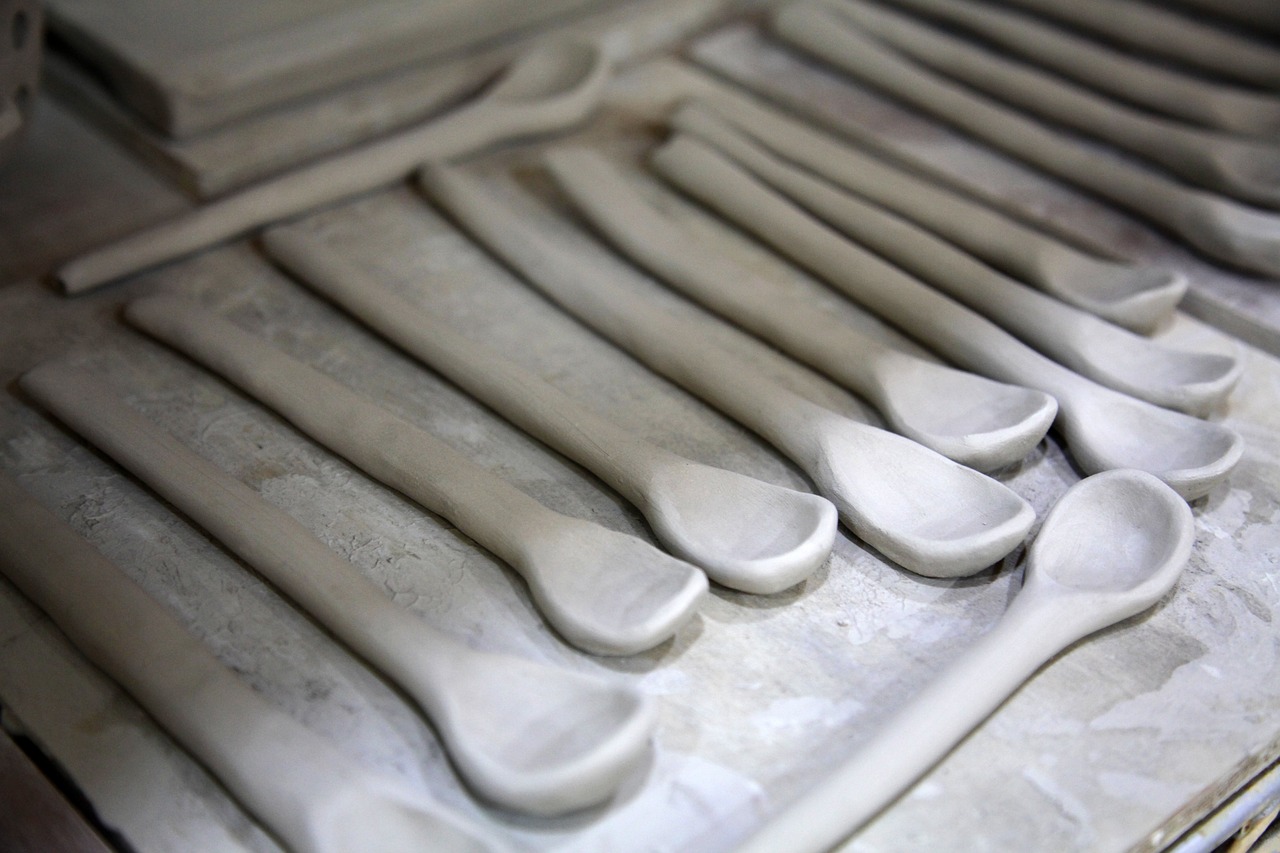
Understanding Pottery Goals
Setting goals in pottery is not just about having a destination in mind; it’s about creating a roadmap for your artistic journey. When you think about it, goals can be likened to the clay on your potter's wheel—without it, you can't shape anything meaningful. In the world of pottery, goals can encompass a wide range of aspirations, from skill development to project completion. Each goal you set serves as a stepping stone, guiding you through the process of honing your craft and unleashing your creativity.
So, what exactly are the types of goals you can set in pottery? Let's break it down:
- Skill Development: This involves improving specific techniques, such as throwing, glazing, or hand-building. Think of it as leveling up in a video game—each skill mastered opens up new possibilities.
- Project Completion: Completing a project, whether it's a simple mug or an intricate vase, gives you a sense of achievement. It's like reaching the finish line of a marathon; the journey may be tough, but crossing that line feels incredible.
- Creative Exploration: Setting goals that encourage experimentation with new styles, glazes, or forms can lead to unexpected discoveries. It's akin to taking a detour on a road trip—you might stumble upon hidden gems along the way!
Understanding the significance of these goals is crucial. They not only enhance your technical skills but also foster your creative expression. When you have a clear goal, you’re more likely to stay motivated and focused. Think of your pottery goals as a compass; they help you navigate through the vast landscape of creativity, ensuring you don’t lose your way.
Additionally, setting goals can create a sense of accountability. When you share your goals with fellow potters or friends, it adds a layer of commitment. You’re not just accountable to yourself; you have a community cheering you on. This support can be invaluable, especially during those times when you might feel stuck or uninspired.
In summary, understanding pottery goals is about recognizing their multifaceted nature. Whether you’re aiming to perfect a technique, complete a project, or explore new creative avenues, each goal contributes to your overall growth as a potter. So grab that clay, set your intentions, and get ready to shape your pottery journey into something truly spectacular!
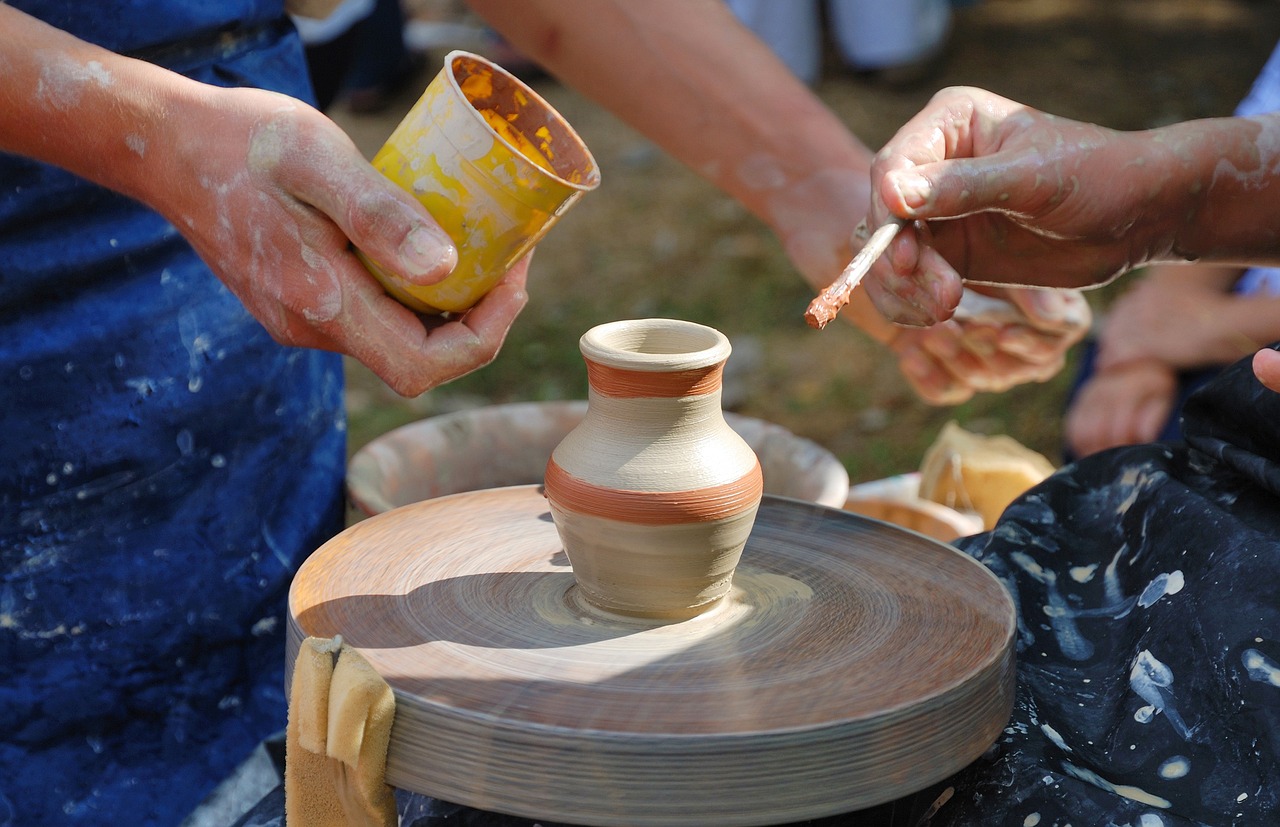
Short-term vs. Long-term Goals
When it comes to pottery, understanding the distinction between short-term and long-term goals is crucial for any aspiring artist. Think of short-term goals as the stepping stones on your journey, while long-term goals serve as the grand destination you aim to reach. Both types of goals are essential, and they work hand in hand to enhance your skills and creativity. Short-term goals can include mastering a specific technique or completing a small project, while long-term goals might involve developing a unique style or preparing for a gallery exhibition.
Short-term goals are often more immediate and can be achieved within a few weeks or months. They provide the motivation needed to keep moving forward. For instance, you might set a goal to create five different types of bowls over the next month. This not only helps you practice various techniques but also gives you a sense of accomplishment as you check each bowl off your list. In contrast, long-term goals require a more extensive timeline and often involve more significant commitments. Perhaps you dream of opening your own pottery studio or participating in a major pottery fair. These goals require planning, dedication, and a lot of hard work.
Now, let’s break down how these goals can complement each other:
| Short-term Goals | Long-term Goals |
|---|---|
| Master a new glazing technique | Develop a signature glaze style |
| Create a series of functional pottery pieces | Launch a pottery line |
| Attend a pottery workshop | Become a pottery instructor |
As you can see, achieving short-term goals can serve as the foundation for your long-term aspirations. Each small success builds your confidence and skill set, making the larger goals feel more attainable. If you find yourself struggling with motivation, consider how your short-term goals align with your long-term vision. It’s like climbing a mountain; each foothold you gain brings you closer to the summit.
In summary, both short-term and long-term goals are vital in your pottery journey. Short-term goals keep you engaged and motivated, while long-term goals provide direction and purpose. By recognizing the value of each, you can create a balanced approach to your artistic development that fosters both immediate satisfaction and lasting achievement.
- What are some examples of short-term pottery goals? Short-term goals can include completing a specific project, mastering a new technique, or participating in a local pottery class.
- How do I set effective long-term pottery goals? Start by envisioning where you want to be in the future. Break that vision down into smaller, actionable steps that you can work on over time.
- Can short-term goals change over time? Absolutely! As you grow and evolve as a potter, your short-term goals may shift to align with your changing interests and skills.
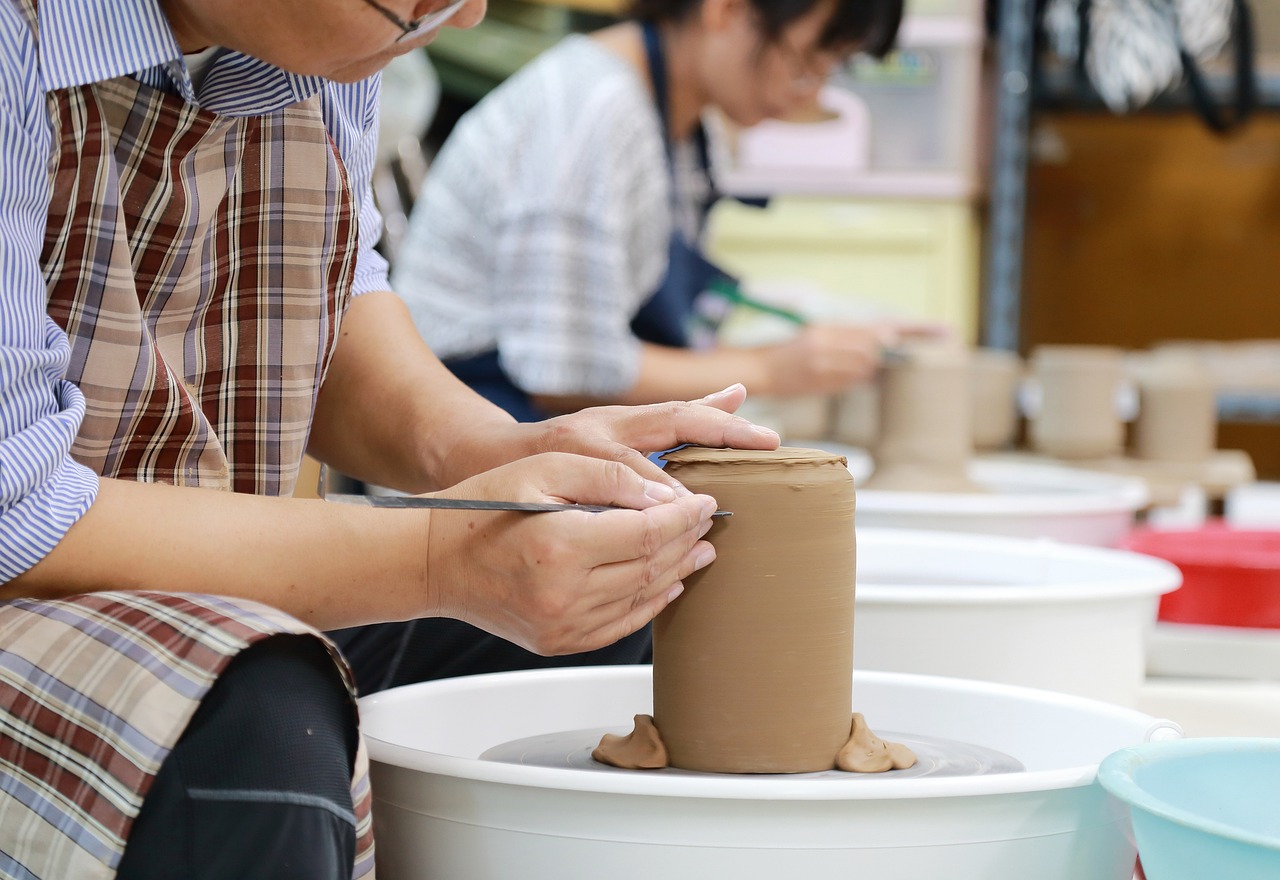
Setting Short-term Goals
Setting short-term goals in pottery is akin to laying down stepping stones on your creative path. These goals act as manageable milestones that not only keep you motivated but also provide a clear direction for your artistic endeavors. Imagine you're a gardener; without small, achievable targets, your garden may become overgrown with weeds of frustration and doubt. By focusing on short-term goals, you cultivate a flourishing space for your creativity to thrive.
To start, think about what you want to achieve in the next few weeks or months. Perhaps you want to master a specific technique, complete a certain number of pieces, or even experiment with new glazes. Short-term goals can be as varied as your imagination allows. For example, you might decide to:
- Practice throwing on the wheel three times a week.
- Create one new piece every two weeks.
- Learn a new glazing technique by the end of the month.
These goals are not just about the end result; they are about the process. Setting short-term goals helps you break down larger projects into bite-sized tasks, making the entire pottery journey less overwhelming. Think of it as breaking a marathon into manageable laps. Each completed lap brings you closer to the finish line while providing a sense of achievement.
Moreover, these goals can serve as a source of inspiration. When you set a goal to try a new technique, you open the door to creativity and experimentation. You might find that what started as a short-term goal evolves into a new passion. For instance, if you aim to create a series of mugs, you might discover a unique style or glaze that resonates with you, leading to a new direction in your work.
Incorporating short-term goals into your pottery practice also encourages a consistent routine. Just like athletes train regularly to improve their performance, potters benefit from a structured practice schedule. Consider setting aside a specific time each week dedicated solely to pottery. This consistency not only enhances your skills but also strengthens your connection to your craft.
One effective strategy is to create a goal tracker that allows you to visualize your progress. You can design a simple table like the one below:
| Goal | Start Date | End Date | Status |
|---|---|---|---|
| Practice throwing on the wheel | 01/01/2023 | 01/31/2023 | In Progress |
| Create new piece | 02/01/2023 | 02/15/2023 | Not Started |
| Learn new glazing technique | 02/16/2023 | 02/28/2023 | Not Started |
As you complete each goal, update your tracker. This not only gives you a sense of accomplishment but also allows you to reflect on your journey. Celebrate your achievements, no matter how small they may seem. Remember, every pot you create is a step toward becoming the potter you aspire to be.
In conclusion, setting short-term goals in pottery can transform your creative practice from a daunting task into an exciting journey. By focusing on achievable objectives, you cultivate a sense of accomplishment, inspire creativity, and establish a consistent routine. So grab your clay, set those goals, and watch your pottery skills blossom!
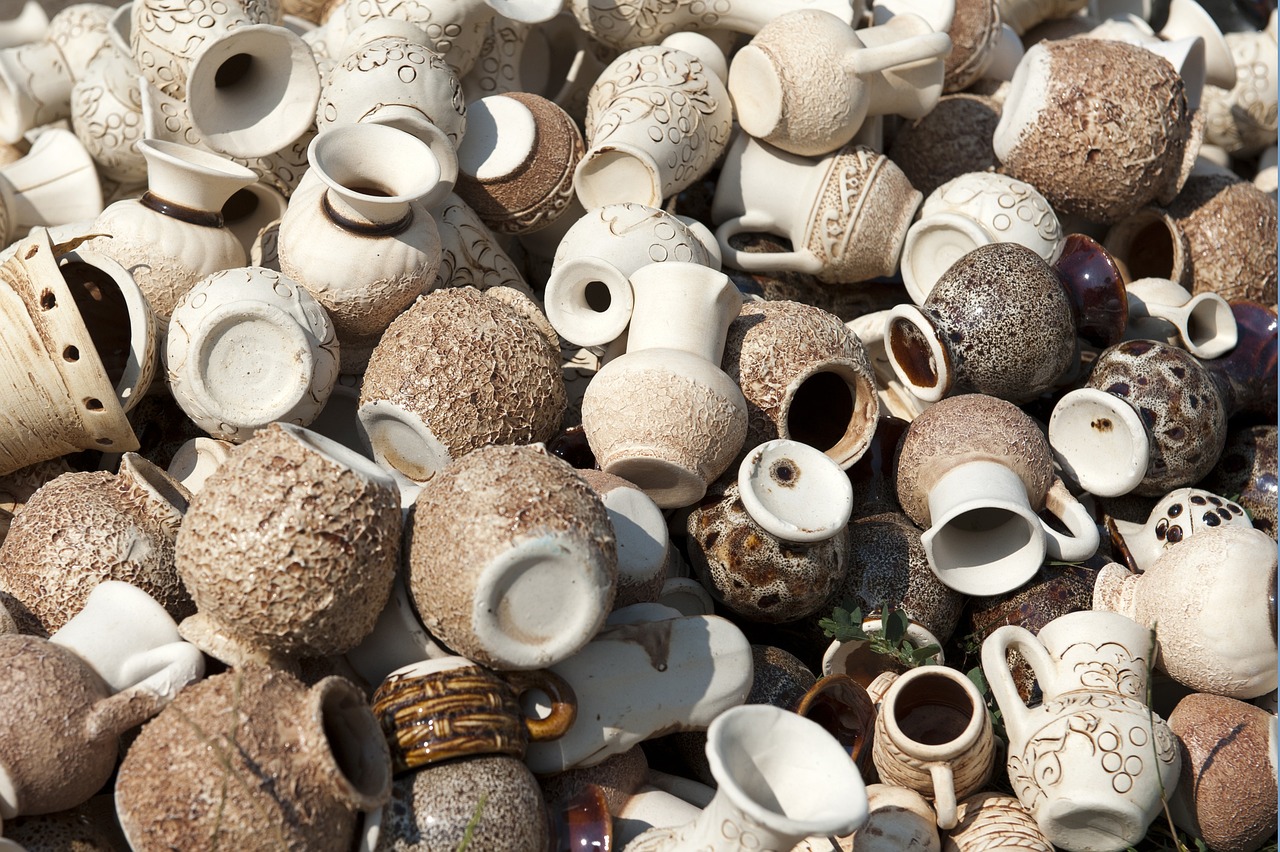
Daily Practice Routines
When it comes to pottery, establishing a daily practice routine can be a game-changer. Think of it like a workout for your creativity and skill—just as athletes train daily to enhance their performance, potters need that same level of commitment to refine their craft. Imagine waking up each day with the intention to create, explore, and improve; that’s the kind of mindset that leads to remarkable progress. But how do you structure this daily routine to ensure it’s both effective and enjoyable?
First off, consistency is key. You don’t need to dedicate hours each day; even 30 minutes can work wonders! Consider allocating a specific time each day for your pottery practice—this could be early in the morning when the world is quiet, or in the evening after a long day. The goal is to make pottery a part of your daily life, so it feels natural rather than a chore.
Here’s a simple framework to get you started on your daily practice routine:
- Warm-up Exercises: Begin with some basic hand-building techniques or clay manipulation exercises. This can be as simple as rolling coils or pinching clay into shapes. It’s all about getting your hands familiar with the medium.
- Focused Skill Development: Choose a specific technique to focus on each day. For example, one day you might work on glazing, while another day could be dedicated to throwing on the wheel. This focused approach allows for deeper understanding and mastery over time.
- Creative Exploration: Allow yourself some time to just play with the clay. Create pieces without the pressure of perfection. This is where your creativity can truly blossom, leading to unexpected and delightful results.
As you develop your routine, it’s essential to remain flexible. Life can be unpredictable, and some days may not allow for your full practice session. On such days, even a quick 10-minute session can keep the creative juices flowing and maintain that connection with your craft. Remember, it’s not about the quantity of time spent but the quality of your engagement with pottery.
Lastly, don’t forget to reflect on your practice. At the end of each week, take a moment to review what you’ve accomplished. Ask yourself questions like: What techniques did I enjoy the most? What challenges did I face? This reflection will not only help you track your progress but also ignite your passion for pottery, making each practice session feel more rewarding.
By incorporating a daily practice routine into your pottery journey, you’re not just enhancing your skills; you’re also cultivating a deeper relationship with your art. So grab that clay, set your intentions, and watch as your pottery skills flourish!
- How long should I practice pottery each day? It varies from person to person, but even 30 minutes a day can lead to significant progress over time.
- What if I don’t have a lot of time? Focus on shorter, more intense practice sessions. Even 10 minutes can be beneficial!
- Can I practice pottery at home? Absolutely! Many potters create stunning works in their home studios. Just ensure you have the right tools and materials.
- Is it okay to experiment during practice? Yes! Experimentation is a crucial part of the learning process. Don’t be afraid to try new techniques!

Project Completion Milestones
When it comes to pottery, the journey is just as important as the final piece. serve as essential markers along this creative path, helping potters to maintain motivation and a sense of achievement. Imagine embarking on a road trip without any stops; it would feel endless, right? Milestones allow you to break down your journey into manageable segments, each one representing a significant achievement in your artistic endeavor.
Setting these milestones can transform the often overwhelming process of creating pottery into a series of exciting challenges. For instance, if you're working on a complex ceramic vase, instead of viewing it as a single daunting project, you might establish milestones such as:
- Sketching your design
- Gathering materials
- Creating the initial form
- Firing the piece
- Applying glazes
- Final firing and finishing touches
Each of these milestones represents a mini-goal that, when completed, brings you one step closer to your end result. Celebrating these small victories not only boosts your confidence but also enhances your creativity. The satisfaction of completing each milestone fuels your passion and drives you to tackle the next step with enthusiasm.
Moreover, it's important to remember that not all milestones will be smooth sailing. Some might lead to unexpected challenges, like a crack in the clay or an undesirable glaze finish. Instead of viewing these setbacks as failures, consider them opportunities for growth. Reflecting on these moments will not only improve your skills but also deepen your understanding of the medium.
To effectively track these milestones, consider creating a simple table to outline your project stages and deadlines. This visual representation can serve as a constant reminder of your journey, helping you stay focused and organized:
| Milestone | Target Date | Status |
|---|---|---|
| Sketching Design | Week 1 | Completed |
| Gathering Materials | Week 2 | In Progress |
| Creating Initial Form | Week 3 | Pending |
| Firing the Piece | Week 4 | Pending |
| Applying Glazes | Week 5 | Pending |
| Final Firing | Week 6 | Pending |
By keeping a close eye on your milestones, you can celebrate your progress and adjust your plans as necessary. This approach not only keeps you organized but also allows you to enjoy the journey of pottery making, one milestone at a time.
Q: How do I set realistic milestones for my pottery projects?
A: Start by breaking down your project into smaller tasks that are manageable within a certain timeframe. Consider your skill level and the complexity of the project.
Q: What should I do if I miss a milestone?
A: Don’t be discouraged! Use it as a learning opportunity. Reflect on what caused the delay and adjust your future milestones accordingly.
Q: Can I use milestones for other creative projects?
A: Absolutely! The concept of setting milestones is applicable to any creative endeavor, whether it’s painting, sculpting, or even writing.
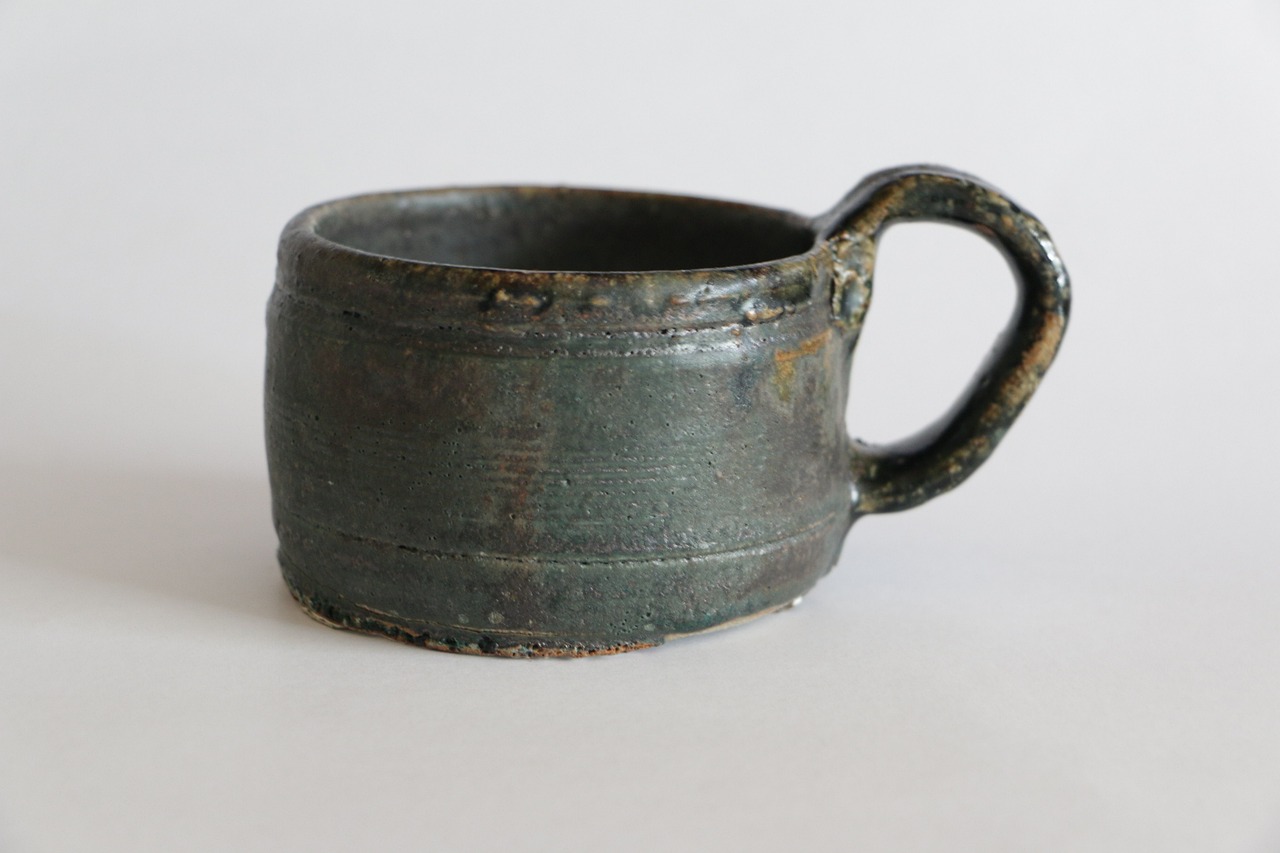
Establishing Long-term Goals
When it comes to pottery, is like setting the foundation for a beautiful piece of art. Just as a potter carefully shapes their clay over time, so too should you shape your artistic journey with clear, ambitious objectives. Long-term goals are not just about the end result; they are about the journey, the skills you acquire along the way, and the growth you experience as an artist. These goals can span months, years, or even a lifetime, and they serve as a guiding star, helping you navigate the often winding path of creativity.
Think of long-term goals as a roadmap. They can include aspirations like mastering a specific pottery technique, creating a personal collection of work, or even exhibiting your pieces in a gallery. Each of these goals requires dedication, planning, and a sprinkle of patience. For instance, if your dream is to showcase your pottery at a local art fair, you’ll need to break this down into smaller steps, such as developing your style, learning about glazing techniques, and understanding how to market your work. This way, you’re not just aiming for the end goal, but actively working towards it every day.
To help you visualize and structure your long-term goals, consider the following elements:
- Specificity: Be clear about what you want to achieve. Instead of saying, "I want to get better at pottery," try, "I want to master throwing bowls on the wheel by the end of the year."
- Measurable: Make sure you can track your progress. For example, set a goal to create a certain number of pieces each month.
- Realistic: While it's great to aim high, ensure your goals are attainable based on your current skills and available resources.
- Time-bound: Set deadlines for your goals to help maintain motivation and focus.
By establishing long-term goals, you not only create a sense of direction but also foster a deeper connection with your craft. Each milestone you reach will build your confidence and inspire you to push your boundaries further. As you progress, don’t forget to revisit and adjust your goals as needed. Life, much like pottery, is about adapting and evolving. Embrace this journey, and let your long-term goals be the clay from which you sculpt your artistic identity.
Q: How do I know if my long-term goals are realistic?
A: Consider your current skill level, available resources, and the time you can dedicate to pottery. It's important to challenge yourself, but also to set goals that are achievable with your current circumstances.
Q: Can I change my long-term goals?
Absolutely! As you grow and evolve as an artist, your interests and aspirations may shift. It's perfectly okay to reassess and modify your goals to better align with your current passions.
Q: How can I stay motivated to achieve my long-term goals?
Break your goals into smaller, manageable tasks and celebrate each achievement along the way. Keeping a pottery journal or visual progress through photography can also serve as a great motivator.

Tracking Your Progress
Tracking your pottery progress is akin to charting a course on a map; it allows you to see where you've been and where you're headed. Just like a traveler who marks their journey with milestones, potters can benefit immensely from documenting their growth. This practice not only provides a sense of accomplishment but also highlights areas that may need improvement. Whether you're a novice or a seasoned artist, keeping track of your progress can be a game changer in enhancing your skills and creativity.
One of the most effective methods for tracking your pottery progress is through journaling. A pottery journal serves as a personal archive that captures your experiences, techniques, and reflections. Imagine flipping through the pages and seeing your evolution over time; it’s like watching a time-lapse of your artistic journey! In your journal, you can jot down notes about different clay types, glazing techniques, and even your emotional responses to various projects. This not only solidifies your learning but also allows you to revisit ideas that sparked your creativity.
Another exciting way to visualize your progress is through photography. Taking photos of your work at different stages can be incredibly motivating. It’s like having a visual diary that showcases your creative evolution. You can create a simple timeline by organizing your photos chronologically. This method not only highlights your improvements but also helps identify patterns in your work. For example, you might notice that your glazing techniques have become more refined, or that your forms have developed a unique style of their own. Capturing these moments can be a source of inspiration and a reminder of how far you've come.
To help you get started, consider the following methods for tracking your pottery progress:
- Pottery Journal: Document your experiences, techniques, and reflections.
- Photography: Capture your work at different stages to visualize improvement.
- Self-Assessment: Regularly evaluate your skills and set new goals based on your observations.
In addition to journaling and photography, engaging in self-assessment can be a powerful tool for tracking progress. Set aside time every few weeks to evaluate your skills critically. Ask yourself questions like: What techniques have I mastered? What challenges do I still face? This reflective practice not only enhances your learning but also empowers you to set new goals that align with your artistic vision. By embracing self-assessment, you can ensure that your pottery journey remains dynamic and fulfilling.
In summary, tracking your pottery progress is essential for growth and development. By utilizing tools like journaling, photography, and self-assessment, you can create a comprehensive view of your artistic journey. Remember, it’s not just about the finished pieces but the journey you take to create them. So grab that journal, snap some photos, and embark on the adventure of documenting your pottery progress!
Q: Why is tracking my pottery progress important?
A: Tracking your progress allows you to see improvements, reflect on your techniques, and set achievable goals for your artistic growth.
Q: How can I start a pottery journal?
A: Begin by dedicating a notebook to your pottery journey. Document your projects, techniques, and thoughts regularly to create a detailed record of your progress.
Q: What should I include in my pottery journal?
A: Include notes on materials used, techniques learned, challenges faced, and personal reflections on each project.
Q: How often should I assess my pottery skills?
A: It’s beneficial to assess your skills every few weeks to ensure you’re on track with your goals and to identify areas for improvement.
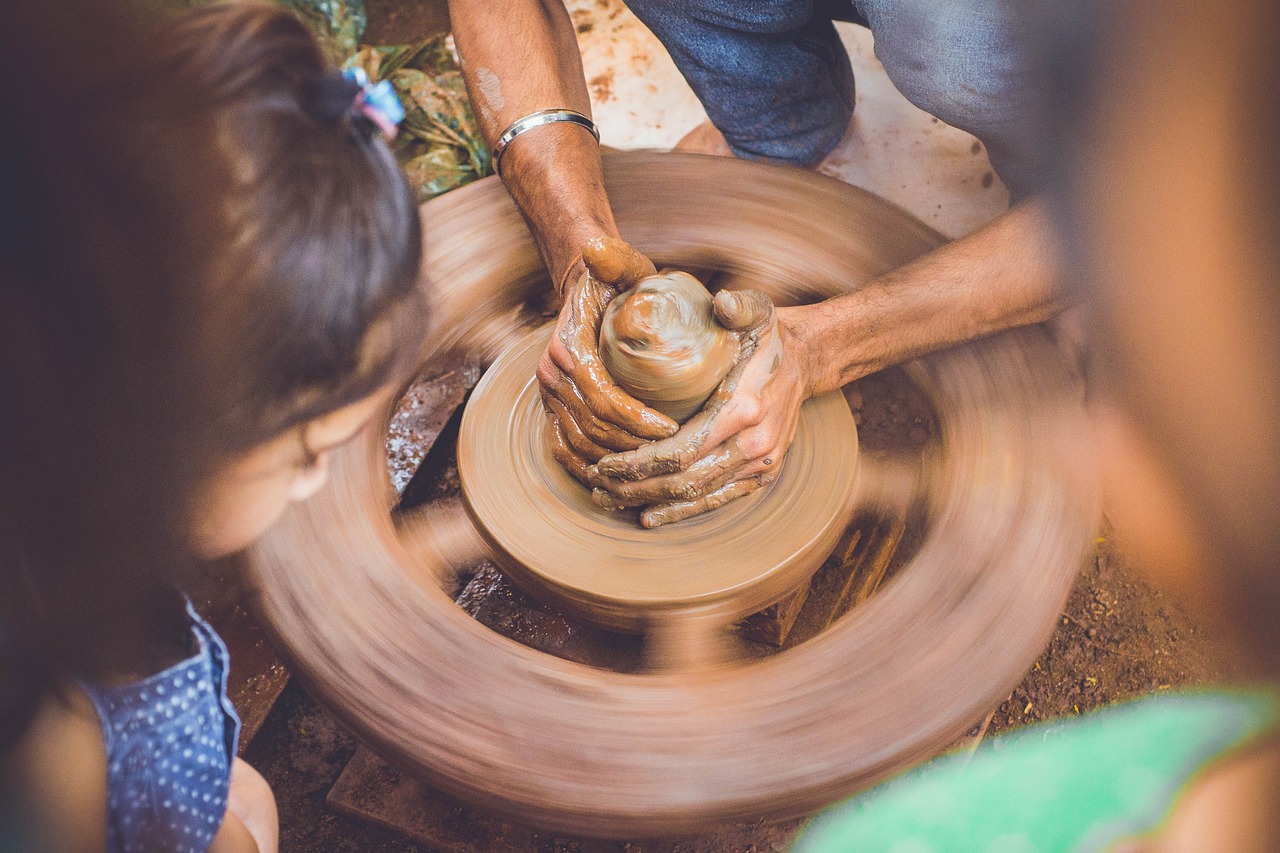
Using a Pottery Journal
Maintaining a pottery journal is one of the most rewarding practices you can adopt as a potter. Think of it as your personal creative companion—a space where you can pour out your thoughts, document your progress, and reflect on your journey. Just like keeping a diary, a pottery journal allows you to capture the essence of your artistic evolution over time. But why should you bother writing things down? Well, let’s dive into the many benefits!
First off, a pottery journal helps you track your technique development. Each time you try a new method, whether it’s throwing on the wheel or hand-building, jotting down your experiences can provide insights that you might forget otherwise. You can note what worked, what didn’t, and any adjustments you made along the way. This kind of reflection is invaluable for continuous improvement.
Additionally, your journal can serve as a visual archive of your work. By including photographs of your pieces alongside your written reflections, you create a rich tapestry of your artistic journey. This not only allows you to see how far you’ve come but also helps you identify patterns in your work. Are you drawn to certain shapes or colors? Do you notice a shift in your style? These insights can guide your future projects and inspire new directions.
Moreover, a pottery journal can act as a goal-setting tool. You can outline specific objectives for your pottery practice, whether that’s mastering a particular technique or completing a series of pieces. By documenting these goals, you create a roadmap that can keep you focused and motivated. It’s like having a personal coach cheering you on from the pages of your journal!
To make the most of your pottery journal, consider including the following elements:
- Date and Time: Always start with the date to keep track of your progress over time.
- Techniques Used: Write down the methods and materials you used for each project.
- Reflections: Include your thoughts on what went well and what challenges you faced.
- Future Goals: Jot down any goals or ideas for future projects.
In conclusion, a pottery journal is not just a record of your work; it’s a powerful tool for growth. By documenting your experiences, you create a resource that can enhance your learning, inspire creativity, and keep you motivated. So grab a notebook, or even better, a beautifully bound journal, and start chronicling your pottery adventures today!
Q: What should I include in my pottery journal?
A: You should include the date, techniques used, reflections on your work, and any future goals or ideas.
Q: Can I use digital tools for my pottery journal?
A: Absolutely! Whether you prefer a physical notebook or a digital app, the key is to find a method that works best for you.
Q: How often should I update my pottery journal?
A: It’s best to update your journal regularly, ideally after each session or project, but do what feels comfortable for you!
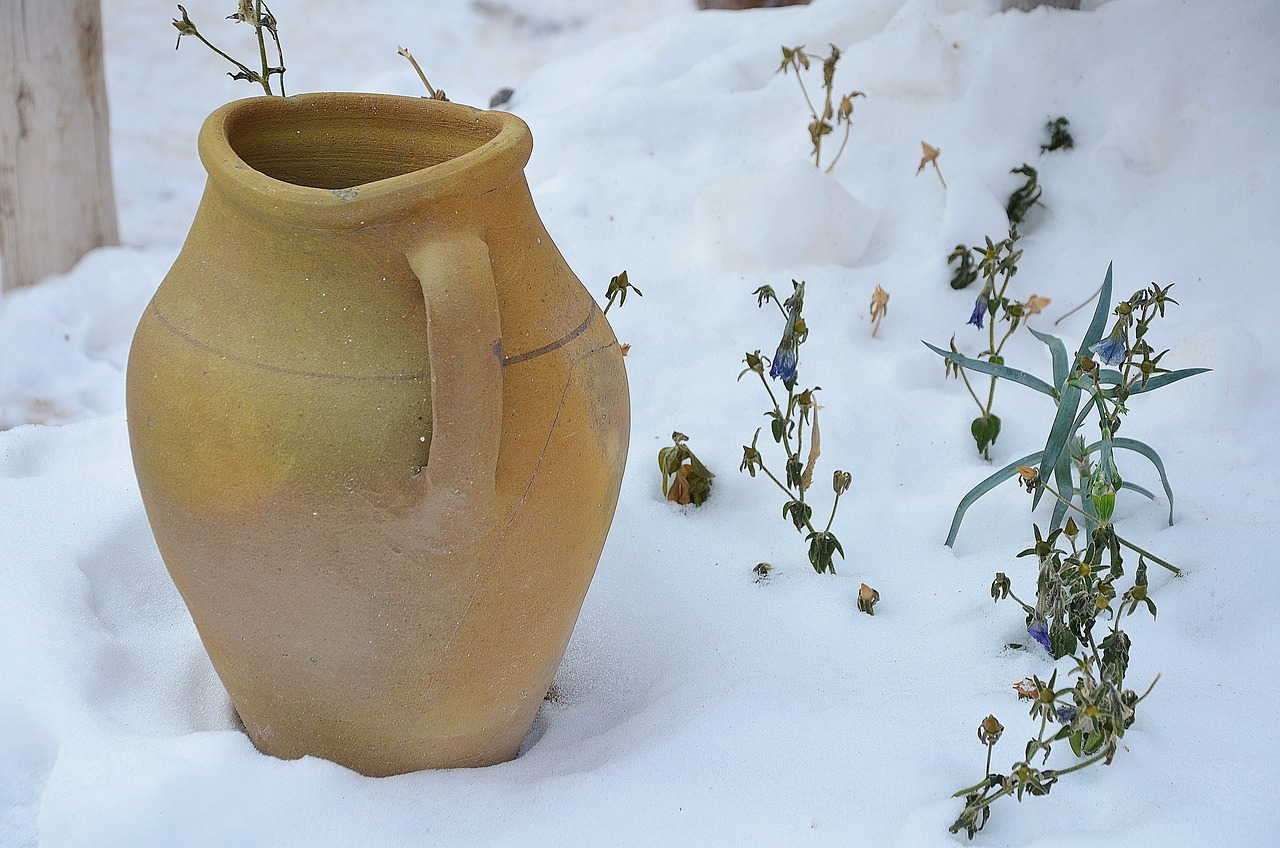
Visual Progress through Photography
In the world of pottery, where tactile experiences and visual aesthetics intertwine, photography emerges as a powerful tool for tracking progress. Imagine capturing the evolution of your work through the lens of a camera; it’s like having a time capsule that showcases your journey from a novice to a skilled artisan. By taking photographs of your creations at various stages, you can not only document your growth but also reflect on the changes in your style and technique over time.
One of the most exciting aspects of using photography in your pottery journey is the ability to visualize your progress. When you look back at earlier pieces, you might notice things you didn’t at the time of creation. For instance, you may observe how your glazing techniques have improved or how your understanding of form has evolved. These visual comparisons can serve as a motivational boost, reminding you of how far you've come and inspiring you to keep pushing your artistic boundaries.
To maximize the benefits of photography in your pottery practice, consider the following tips:
- Consistency is Key: Take photos regularly—whether it’s after completing a piece or at different stages of your work. This will create a comprehensive visual diary of your progress.
- Set Up a Dedicated Space: Create a well-lit area for photographing your work. Natural light works wonders, but soft artificial lighting can also enhance the details of your pottery.
- Experiment with Angles: Capture your pieces from various angles to highlight different features. Sometimes, a simple shift in perspective can reveal the beauty of your work in unexpected ways.
Additionally, you can use photography as a means of reflection. After taking photos, spend some time analyzing them. What do you like about each piece? What would you change if you were to create it again? This kind of critical thinking not only sharpens your skills but also deepens your understanding of your artistic voice.
Another fascinating aspect of visual progress through photography is the opportunity to share your journey with others. Social media platforms, pottery forums, and blogs provide spaces where you can showcase your work. Engaging with a community of fellow potters can lead to valuable feedback and support, further enriching your creative process. Plus, seeing others’ work can spark inspiration and new ideas for your projects.
In summary, photography is more than just a way to document your pottery; it’s a transformative tool that allows you to appreciate your growth, reflect on your techniques, and connect with a broader community. So, grab your camera and start capturing your pottery journey today—you’ll be amazed at what you discover!
- How often should I take photos of my pottery? It's best to take photos regularly, ideally after completing each piece or at different stages of your work to capture your progress over time.
- What type of lighting is best for photographing pottery? Natural light is ideal, but if that's not possible, use soft artificial lighting to avoid harsh shadows and highlights.
- Can I use my smartphone for pottery photography? Absolutely! Modern smartphones have excellent cameras that can capture detailed images of your work.
- How can I use my photography to improve my pottery skills? By analyzing your photos, you can identify areas for improvement and reflect on your artistic choices, which can enhance your skills over time.
Frequently Asked Questions
- What are achievable goals in pottery?
Achievable goals in pottery are specific, measurable objectives that potters set to enhance their skills and creativity. These can range from mastering a new technique to completing a specific project. By setting these goals, potters can track their progress and stay motivated throughout their artistic journey.
- How do I differentiate between short-term and long-term goals?
Short-term goals are typically smaller, more immediate objectives that can be accomplished in a short timeframe, like practicing a specific technique for a week. Long-term goals, on the other hand, are broader and take more time to achieve, such as developing a unique pottery style over several months or years. Both types of goals complement each other, contributing to overall growth.
- What are some examples of short-term goals I can set?
Examples of short-term goals include dedicating a certain number of hours per week to practice, experimenting with a new glazing technique, or completing a small project like a mug or bowl within a specific timeframe. These goals not only improve skills but also provide a sense of accomplishment.
- How can I create an effective daily practice routine?
To create an effective daily practice routine, start by setting aside a specific time each day dedicated to pottery. Focus on one skill or technique at a time, and gradually increase the complexity of your projects as you improve. Consistency is key, so find a routine that fits comfortably into your lifestyle.
- Why are project completion milestones important?
Project completion milestones are important because they break larger projects into manageable tasks. This approach helps maintain motivation, as completing each milestone provides a sense of achievement and encourages you to continue progressing toward your final goal.
- What are some tips for establishing long-term goals?
When establishing long-term goals, consider what you want to achieve in your pottery journey over the next few years. Set ambitious yet realistic objectives, such as participating in a pottery exhibition or developing a signature style. Regularly review and adjust these goals as you grow and learn.
- How can I effectively track my pottery progress?
You can effectively track your pottery progress through various methods such as journaling about your experiences, taking photographs of your work, or conducting self-assessments. These strategies help you visualize your improvements and identify areas where you can continue to grow.
- What are the benefits of maintaining a pottery journal?
A pottery journal allows you to document your experiences, techniques, and reflections, which enhances your learning process. By regularly writing in your journal, you can track your progress, recognize patterns in your development, and gain insights into your artistic journey.
- How can photography help in tracking my pottery progress?
Photography serves as a powerful tool for tracking your pottery progress. By capturing images of your work at different stages, you can visually assess improvements over time and motivate yourself to keep pushing your boundaries. Plus, it’s a great way to share your journey with others!


















